So basically I just wanted to share my experience and some graphs of my first O2 Sensor failure.
I did a fresh water dive yesterday, water temp 4C, max depth 30m, dive time around 1h with no-deco, and when diving back to the entry at 10m of depth I had one of the three O2 sensors showed way different values then the other 2 sensors did, with values ranging from 1.5 to 0 ppO2 at a SP of 1.2. I flushed and after watching the values I bailed out and ascended without problems and without panicking, still in the beginning of my ccr journey but especially because of practicing switching to bailout during the same dive I had a quick reaction time, which wouldn't have been necessary but a failing sensor was a big surprise for me so I still bailed out. Analysing the data after the dive it showed that the mV readings of this O2 Sensor where around 5 mV off for the entire dive till it failed. The reason for this failure probably the electrolyte in the sensor(potassium hydroxide) leaking out of the cell chamber which was noticeable after 6 hours by the sensor partially filling up with a rusty looking fluid, the electrolyte. This was on a sensor produced and built into the device in 9/2022.
I did a fresh water dive yesterday, water temp 4C, max depth 30m, dive time around 1h with no-deco, and when diving back to the entry at 10m of depth I had one of the three O2 sensors showed way different values then the other 2 sensors did, with values ranging from 1.5 to 0 ppO2 at a SP of 1.2. I flushed and after watching the values I bailed out and ascended without problems and without panicking, still in the beginning of my ccr journey but especially because of practicing switching to bailout during the same dive I had a quick reaction time, which wouldn't have been necessary but a failing sensor was a big surprise for me so I still bailed out. Analysing the data after the dive it showed that the mV readings of this O2 Sensor where around 5 mV off for the entire dive till it failed. The reason for this failure probably the electrolyte in the sensor(potassium hydroxide) leaking out of the cell chamber which was noticeable after 6 hours by the sensor partially filling up with a rusty looking fluid, the electrolyte. This was on a sensor produced and built into the device in 9/2022.



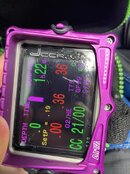
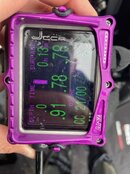
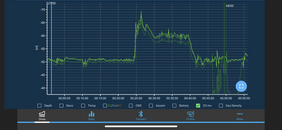
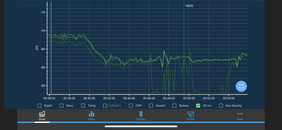
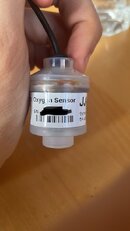
 for that but it was a good opportunity to do a dil flush and check the cells.
for that but it was a good opportunity to do a dil flush and check the cells.